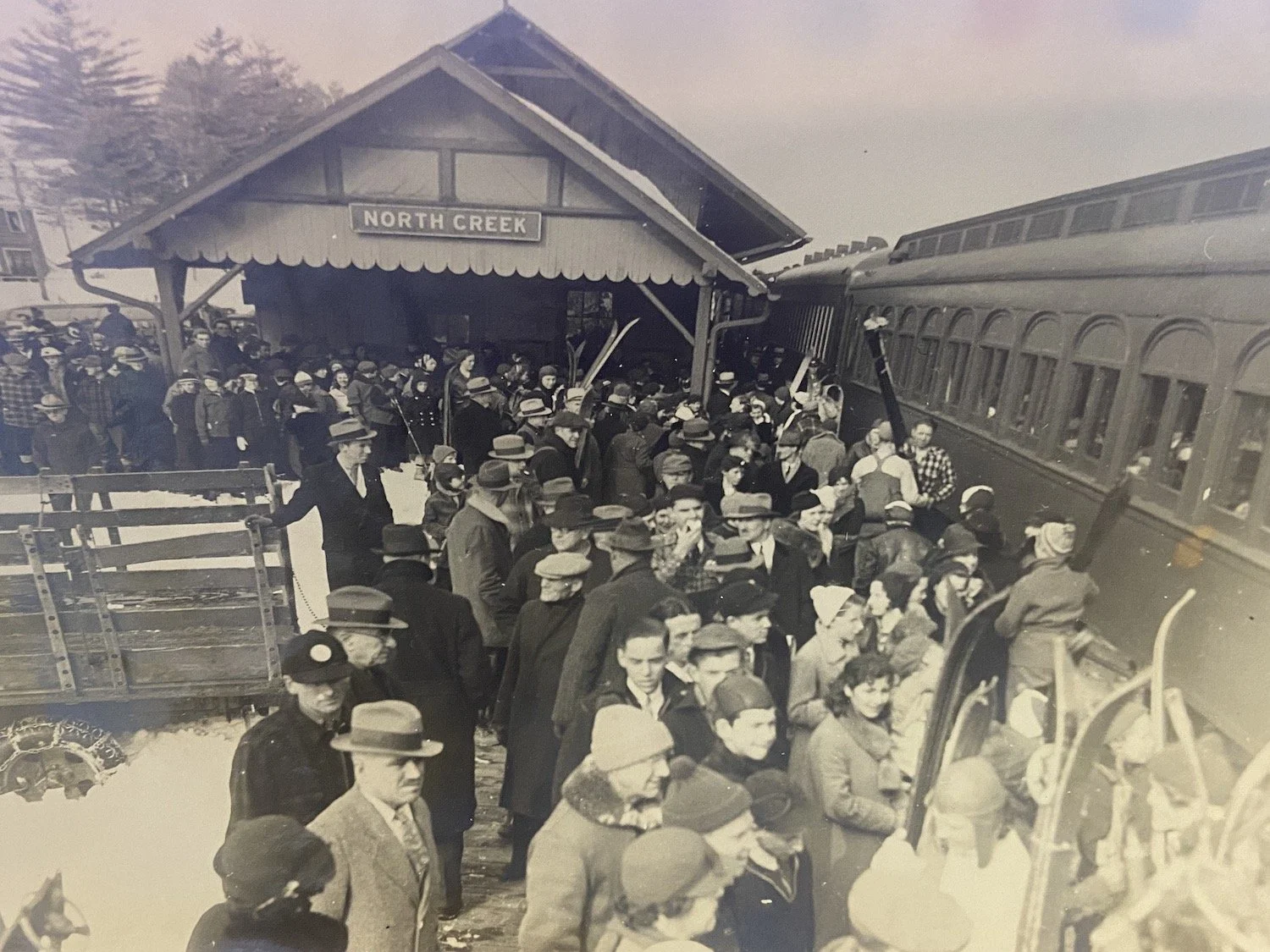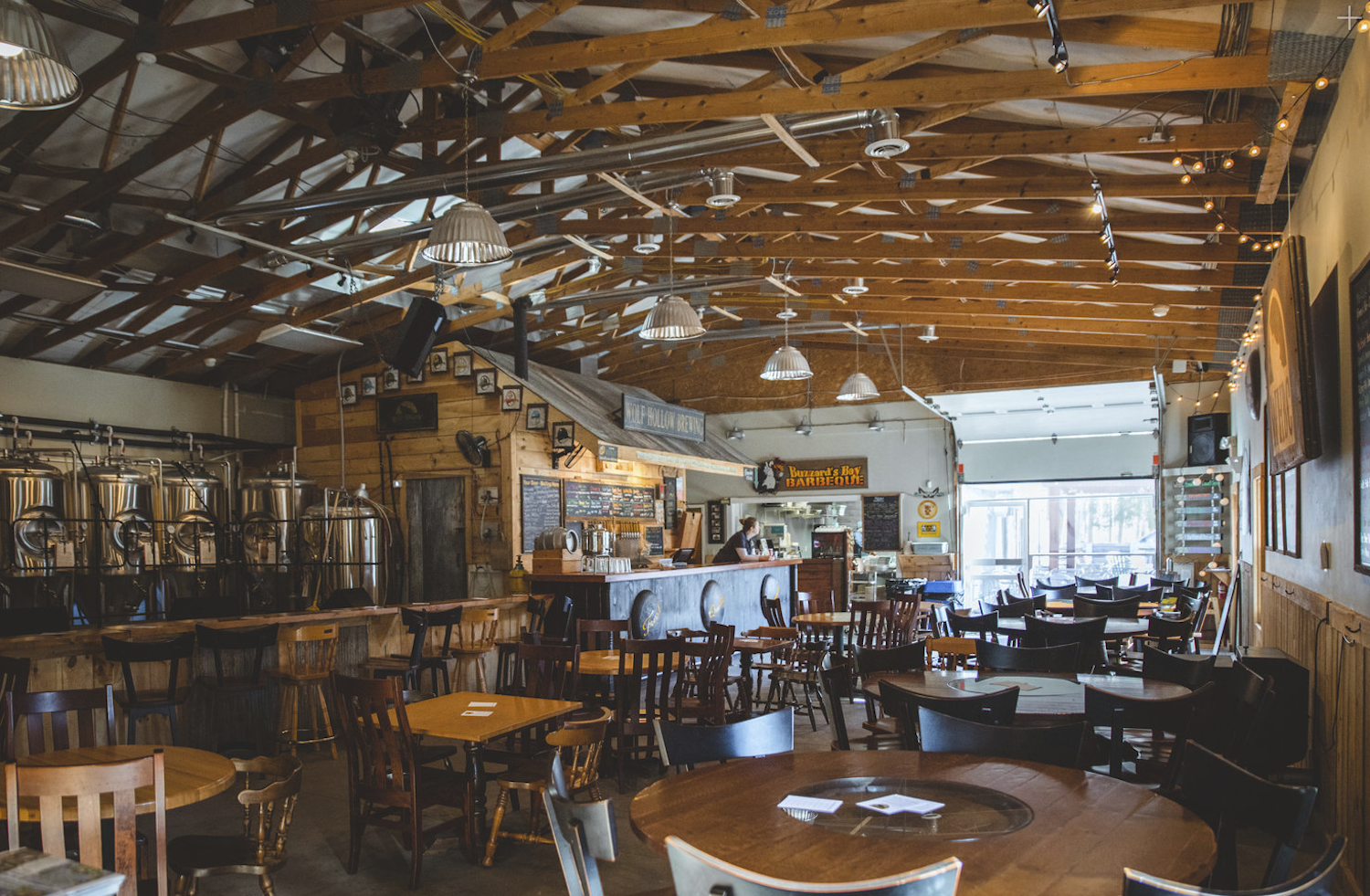Firsthand Stories of How Skiing Came to North Creek
For all who love Adirondack history, the next few weeks will offer an abundance of opportunities to expand our understanding of how in the midst of the Great Depression the community of North Creek woke to the potential of becoming "America's St. Moritz" and went on to become it, serendipitously connecting with a group of young Schenectadians whose interest in skiing and other winter sports was ignited by the 1932 Lake Placid Olympics.
The first Snow Train arrived in North Creek on Sunday, March 4, 1934.
As part of North Creek's celebration of the 90th anniversary of the first Snow Train on March 4, 1934, members of the two families that played the most pivotal roles in the development of North Creek’s as a ski community -- the Schaefers and the Cunninghams -- will be on hand at the Tannery Pond Center in North Creek to share their stories.
Because of the key role played by the Schenectady Wintersports Club, events also are being hosted for those who live to the south at West Glenville's Wolf Hollow Brewing Company on Amsterdam Road. Wolf Hollow will be pouring a new specialty beer, "Snow Train '34," crafted to commemorate the anniversary.
A remarkable combination of historic factors combined to make the development of skiing at Gore Mountain possible.
First, you needed Thomas Durant to create the Adirondack Railroad that would later become the Delaware & Hudson's Adirondack Branch, terminating in North Creek right at the base of Gore Mountain.
Then you needed loggers to carve into Gore's forest the crude roads that years later could be expanded by the North Creek Ski Club into logging trails.
Then you needed Henry H. Barton to discover commercial quantities of garnet on Gore's shoulder and build a road that a half-century later would enable you to drive skiers up it in caravans of trucks, buses, and cars.
And none of this would have been possible had C.R. Barton not offered the use of Barton Mines property for this venture. Back in those days no one considered it necessary to absolve the company of legal liability.
"It was just one good neighbor allowing the rest of the community to take advantage of their prime location and enjoy the landscape," writes Dan O'Keeffe with Mary Cunningham Moro in Ride Up - Slide Down: A History of Skiing at Gore Mountain.
Events at Both Sites
Tannery Pond Center, North Creek
Saturday, January 27, 7 p.m. Jim Schaefer, son of Vincent Schaefer and Lois Perret Schaefer, will present "How Skiing Came to North Creek: Schenectady's Role." Vincent organized the Schenectady Wintersports Club, which scheduled the first Snow Train. A club board member and RN, Lois chaired the First Aid Committee, which evolved into first Ski Patrol. Come at 6:30 p.m. to enjoy a tasting of Wolf Hollow's "Snow Train '34."
Tannery Pond Center
Saturday, February 10, 7 p.m. Greg Schaefer, son of Carl Schaefer, who installed the first rope tow at what we today call the "Ski Bowl" and established the first ski school at Gore Mountain, will host "Old Ski Movie Night from 1930’s to the 1950’s" on behalf of the North Creek Depot Museum. Most of the films he'll show were made by Bill Gluesing (pronounced "glee-sin"), a GE engineer who became the nationally renowned host of GE's "House of Magic" and the most effective promoter of skiing at Gore Mountain.
Saturday, February 17, 7 p.m. Jim Schaefer will present "Schenectady's Women of Winter," a tribute to pioneering ski instructor Frederica "Freddie" Anderson and to Lois Perret Schaefer, the RN who was asked by her future husband, Vincent, to chair the First Aid Committee and in the process invented the first Ski Patrol.
Thursday, February 22, 7 p.m. The Johnsburg Historical Society will host a presentation on the 10th Mountain Division, the elite U.S. Army unit that played a crucial role in the Italian Campaign of World War II and had a significant impact on the post-war development of recreational skiing in New York State and elsewhere in America.
Sunday, March 3, 1 p.m. We'll conclude our 90th anniversary festivities with a sit-down with four members of the Cunningham family who have played key roles in carrying on the long skiing legacy established by Patrick J. Cunningham, who founded Cunningham's General Store in 1908 and went on with his son Butler to transform it into the ski shop we know today as Cunningham's Ski Barn. We'll hear from Butler's son and daughter, Dick and Mary; Deborah Cunningham, who helped her husband Patrick run the shop for many years while pursuing her own career with the New York State Education Department in Albany, and Tyler Cunningham, who continues to run the enterprise today.
Wolf Hollow Brewery, West Glenville
Wolf Hollow Brewing Company
Tuesday, January 30, 6 p.m. Bill Schaefer, brother of Greg, son of Carl, and Schenectady Wintersports Club historian will host a showing of old ski films and a tasting of “Snow Train ‘34,” the specialty beer crafted by to commemorate the Snow Train.
Tuesday, February 6, 6 p.m. Jim Schaefer will reprise the presentation he'll give January 27 at the Tannery Pond Center: “How Skiing Came to North Creek: Schenectady's Role."
Tuesday, February 13, 6 p.m. Jim and Bill Schaefer will host another movie night Movie Night, this time showing Adirondack Hickories, a 1946 film that shows celebrated ski instructor Freddie Anderson in her traditional skiing on Pete Gay Mountain’s Garnet Trail, executing a series of graceful turns in sync with classical music. We’ll alse see video of Freddie at 95 skiing at Whiteface.
Tuesday, February 20, 6 p.m. Jim Schaefer will reprise his February 17 North Creek presentation: “Women Of Winter," a look at the lives and contributions of Frederica "Freddie" Anderson and Lois Perret Schaefer, his mother, who established the nation’s first Ski Patrol.
How Skiing Came to North Creek: The Story in Brief
Snow Trains continued to run throughout the 1930s from New York City, Albany, and Schenectady. This photo was taken February 10, 1935.
"The idea of bringing people by train to the North Country to enjoy skiing and other winter sports was conceived and organized by Vincent J. Schaefer and Bill Gluesing through the cooperative efforts of North Creek skiing enthusiasts and the Schenectady Wintersports Club in 1932," O’Keeffee continues.
So where did Schaefer get the idea?
He tells us in Serendipity in Science: Twenty Years at Langmuir University, the autobiography assembled from his voluminous writings by his son Jim Schaefer and historian Don Rittner 20 years after his death in 1993.
"Early in the 1930s I read about the Snow Train running on weekends out of Boston. They would take skiers to parts of the White Mountains for the day and then return them to Boston by evening."
Schaefer first approached the Boston and Maine Railroad to see if they would run a similar train out of Scotia to Wilmington, Vermont, where several had gone cross-country skiing. Circulating a petition, Schaefer was able to prove to Passenger Agent Fred Grant that there was sufficient demand to warrant such a train.
"Thus, in the winter of 1933, all was in readiness for our first snow train," Schaefer continues. "The date was set, my committees were ready, but -- there was no snow!"
"This meant postponing the trip to the next weekend and notifying everyone by postcard of the new plans. You guessed it -- there was no snow the second week! This meant another batch of postcards. These were the days before computer labels!"
"And so it went, week after week, until we abandoned our plans for the winter."
In establishing the nation’s first Ski Patrol, Lois Perret Schaefer oversaw the deployment of four rescue sleds in sheds around “Little Gore.”
As the winter of 1934 approached, Schaefer and Irving Langmuir, who just the year before had won a Nobel Prize in chemistry for pathbreaking work in surface chemistry, performed an aerial survey from Langmuir's newly purchased open seat Waco airplane over the Catskills. They concluded from this search that Mount Utsayantha in Delaware County would be a good candidate. But when the time came to make decisions, Schaefer writes, "Mr. Fred Gelhooley, Passenger Agent for the D&H, proposed that we consider North Creek in the Adirondacks."
It's a good thing he did, but still there was no snow. Throughout the winter, seven snow trains were scheduled and cancelled until finally a blizzard hit and made the trip possible on Sunday, March 4. The cost of a round-trip ticket: $7.50.
"At the last minute, a second engine was hooked on since the turnout was much greater than had been anticipated," Schaefer continues.
"Upon arrival at the 'Crick,' the villages and surrounding mountaineers had a fleet of trucks at the station. As each truck was loaded, it took off and headed for the Barton Mines, located near the top of Gore Mountain. Reaching that spot, everyone clamped on their skis and headed for the several mountain trails that had been established by North Creek Ski Club members, with our cooperation. The Pete Gay and Rabbit Pond runs were available at that time. These were old wood roads established many years earlier by loggers. The overgrown trails had been cleared of brush and while rather narrow, had grades that were not unduly steep."
O'Keeffe and Moro offer further details:
"Awaiting many of the skiers was John Ordway's 'open taxi' to take the skiers who were anxious to get started to the top of the mountain. Ordway packed them in -- as many as 15 to 20 people -- all standing in the back of an open truck. Anxious to get a 'jump' on the skiing, these die-hard skiers didn't seem to mind that the ride was 'air-conditioned' all the way."
For those staying over, School Principal Clarence Topping took on the task of finding accommodations with local families, they write.
"Every 'Cricker' would have a paddle with a number on it. These numbers corresponded to the numbers the passengers on the train would have been assigned. Each of us would stand with our paddles raised and the passengers that 'belonged' to us would step forward to join us. We would take them home to be 'boarded' for the duration of their visit...It was said that more people came in on the train than were residing in North Creek."
Snow trains would continue to run throughout the 30s, bringing in skiers from Albany and New York City as well as Schenectady.
"One of the things this influx of New York City skiers did for our small town was to increase our social interaction,” O'Keeffe writes.
”With all the imported skiers, the little town was actually 'jumping' on a Saturday night. There would always be a band and dancing over my father's drug store, where we had created a sort of dance hall, creatively dubbed 'O'Keeffe's Hall' by the locals. The likes of Guy LaPell, Harold Landon, 'Tump' Yandon, and Mrs. Alexander, all local musicians, would jazz up the hall, and the visitors would swarm in to enjoy an evening of music, dance, and socializing with the North Creek locals."






